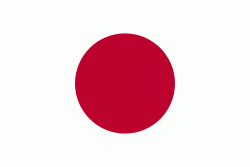Aomori Airport (Aomori Airport)
Aomori Airport (青森空港) is an international airport located 11.2 km south southwest of Aomori Station in Aomori, the capital city of Aomori Prefecture in northern Japan. The airport has international service within East Asia in addition to several domestic routes and serves as an international gateway to northern Tōhoku. In 2018, the airport was the 27th-busiest in Japan by passenger traffic.
Permission to build Aomori Airport was granted by the Ministry of Transport on 1 September 1962. Construction of the airport was completed in August 1964 and the first Aomori Airport was opened on 5 November 1964, in the town of Namioka that has since been annexed by the city of Aomori, with a single 1200 x 30 meter runway designed for use with the NAMC YS-11 aircraft. The airport was located at an altitude of 200 meters in a valley surrounded by mountains, which hampered operations during inclement weather. The runway was lengthened to 1350 meters in 1971, widened to 45 meters in 1972, and extended to 1400 meters in 1973. The terminal building was expanded in 1974, and again in 1978.
Due to the geographic limitations of the existing site, design work began to shift the position of the airport to its present location southwest of downtown Aomori, much of the land occupied by the old airport still lies within the northeastern premises of the current airport - roughly along the apron designated for light aircraft. The new facilities opened in 1987 with a single 2000 x 60 meter runway, with an ILS system. The runway was extended to 2500 meters in 1990. In 1995, the airport terminal building was remodeled, and certified as suitable for international operations.
The runway was extended to 3,000 meters in 2005, and the instrument landing system upgraded to handle Cat-3a fog conditions in 2007. The Tōhoku Shinkansen high-speed rail line was extended to Aomori in 2010, adding intense competition on the Aomori–Tokyo route. The government of Aomori Prefecture considered the privatization of the airport in 2012 following a study; however, as of 2019 the airport is still managed by the prefecture. After an increase in passenger traffic and the announcement of increased international services, the terminal was renovated in 2019. The renovation included increased capacity for international customers, the addition of prayer facilities for Muslim travelers, and aesthetic updates to the appearance of the entire terminal building.
Permission to build Aomori Airport was granted by the Ministry of Transport on 1 September 1962. Construction of the airport was completed in August 1964 and the first Aomori Airport was opened on 5 November 1964, in the town of Namioka that has since been annexed by the city of Aomori, with a single 1200 x 30 meter runway designed for use with the NAMC YS-11 aircraft. The airport was located at an altitude of 200 meters in a valley surrounded by mountains, which hampered operations during inclement weather. The runway was lengthened to 1350 meters in 1971, widened to 45 meters in 1972, and extended to 1400 meters in 1973. The terminal building was expanded in 1974, and again in 1978.
Due to the geographic limitations of the existing site, design work began to shift the position of the airport to its present location southwest of downtown Aomori, much of the land occupied by the old airport still lies within the northeastern premises of the current airport - roughly along the apron designated for light aircraft. The new facilities opened in 1987 with a single 2000 x 60 meter runway, with an ILS system. The runway was extended to 2500 meters in 1990. In 1995, the airport terminal building was remodeled, and certified as suitable for international operations.
The runway was extended to 3,000 meters in 2005, and the instrument landing system upgraded to handle Cat-3a fog conditions in 2007. The Tōhoku Shinkansen high-speed rail line was extended to Aomori in 2010, adding intense competition on the Aomori–Tokyo route. The government of Aomori Prefecture considered the privatization of the airport in 2012 following a study; however, as of 2019 the airport is still managed by the prefecture. After an increase in passenger traffic and the announcement of increased international services, the terminal was renovated in 2019. The renovation included increased capacity for international customers, the addition of prayer facilities for Muslim travelers, and aesthetic updates to the appearance of the entire terminal building.
| IATA Code | AOJ | ICAO Code | RJSA | FAA Code | |
|---|---|---|---|---|---|
| Telephone | Fax | ||||
| Home page |
Map - Aomori Airport (Aomori Airport)
Map
Country - Japan
 |
 |
| Flag of Japan | |
Japan is the eleventh most populous country in the world, as well as one of the most densely populated and urbanized. About three-fourths of the country's terrain is mountainous, concentrating its population of 124.8 million on narrow coastal plains. Japan is divided into 47 administrative prefectures and eight traditional regions. The Greater Tokyo Area is the most populous metropolitan area in the world, with more than 37.2 million residents.
Currency / Language
| ISO | Currency | Symbol | Significant figures |
|---|---|---|---|
| JPY | Japanese yen | ¥ | 0 |
| ISO | Language |
|---|---|
| JA | Japanese language |















